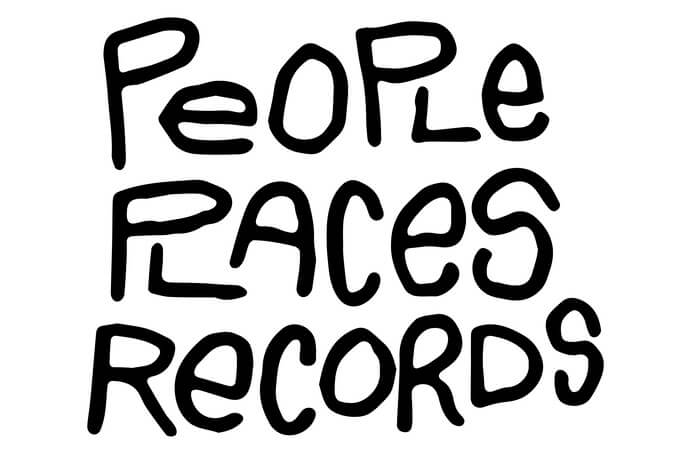Aeryn Santillan and Andrew Noseworthy started independent record label People Places Records in 2017, first releasing music by their own experimental duo this place is actually the worst and expanding to works by a tightly-knit network of adventurous players and composers. “People Places Records was started as a way of building the music community around us that exists both in the ‘new music’ and in the ‘hardcore/electronic’ realms and still all operate with the same DIY ethos and intent,” says Aeryn Santillan of the label, which is based in Brooklyn. I asked them five questions about People Places Records’ mission and future as a label.
What led you to start a record label?
People Places Records began as a way to support our community of diverse musicians who are creating experimental music that doesn’t quite fit into any specific genre box while operating under DIY ethics. Our initial musical experiences stem from DIY hardcore/punk scenes, where the music exists because of community support and collaboration. While in graduate school, we noticed that our background and that of our peers not only influenced our music sonically, but also influenced the way we wanted to disseminate that work. We started PPR to continue building this scene that exists in the new music, hardcore, and electronic realms while maintaining the same ethos and intent we grew up with. Our goal is to support the community of musicians around us and guide people on how they want to release their music.
How do you feel People Places Records is similar to or different than other labels? Are there any other labels that inspired your approach?
People Places Records is definitely influenced by other cross-genre labels like Cantaloupe Music, New Amsterdam Records, Parlor Tapes; and heavier-leaning music labels like Middle Man Records, slashsound, and Zegema Beach Records. Each of these labels cater to their artists and community and put out incredibly diverse music. We’re also particularly inspired by the production models embraced by early hardcore labels like Dischord and SST. Musically, what sets PPR apart is the extra step taken by the music we release. Even though a composed piece like Aeryn’s Silent Town may be perceived as a different genre than our release as the hardcore band this place is actually the worst, audibly a listener can further hear just how connected these two worlds are while also not feeling alienated if their tastes fall more on one side than the other. When you listen to Phong Tran‘s Rotation, a virtuosic solo piano piece, you can also hear how it is of the same musical sphere as the artist’s modular synth/electronic work. Each of our releases come in unique and hand-produced formats handmade together with the artists, which is different from the standard record releases of other labels. Our previous two new music singles, Rotation, and Shelley Washington‘s BIG Talk were released physically as limited edition screen prints: Shelley’s as a t-shirt and Phong’s as a canvas print.

Shelley Washington–Photo by Peter Yankowsky
Your releases span several different genres and styles. What is the “through-line” of the releases in your catalog?
While the through-line can be found in the music itself, each artist we work with is multifaceted and willing to integrate themselves within the process of releasing their work. The cover art and canvas print for Rotation were both designed by Phong, while frequent collaborators like Shelley and Adam Cuthbért contributed additional instrumentation to the this place is actually the worst full-length album and the small caps EP. This approach is a more engaging way to create art and also combats the exclusivity and specialization associated with the contemporary classical scene. In a world where a composer or performer’s success path can be defined by pre-existing institutions like academia, competitions, awards, or already existing lineages, our community and drastic style-crossing approach challenges that success path and means there are more opportunities for this kind of art to exist.
What kinds of releases do you want to do in the future, and what do you look for in choosing releases?
In the future, we plan to release more music that has grown out of community collaborations with a focus on cross-genre music—something that makes you wonder if you should call a group of musicians a band or an ensemble, or piece of music a song or a composition. We have some new music singles and EPs lined up from our current roster as well as artists that have yet to be featured on the label. One of the more immediate releases is an EP of electro-acoustic and chamber music by composer Sebastian Zel accompanied by original art by Stephanie Butchko. Looking ahead to 2019, we are looking to do more compilation releases rather than singles, specifically pieces by artists associated with People Places Records that grew out of commissioning initiatives that Andrew is involved with.
When we’re approached about a release, we look for music that will have a life beyond its premiere performance. Emerging composers are often in a position where the primary focus of a new piece is on the premiere performance/recording, as it may be the only performance that new work receives. We want to challenge that standard and provide our artists with a different platform for their music. Again, going back to our DIY roots, we want this work to have a continual existence, similar to how bands make a record and then tour that album. We project to support this idea of a work’s longevity in order to expand our artists’ musical community. Something we admire about labels like Middle Man Records and Zegema Beach Records is their willingness to collaborate and co-release music with multiple labels. This is seen more consistently in the DIY punk community, and we’d like to see it happen more in the new music community. We’re hoping to do some split releases with other hardcore and electronic labels, especially Adam Cuthbért’s label, slashsound.
Do you have any advice for experimental musicians looking for outlets and promotion of their music?
Aeryn: My best advice is don’t be afraid to do it yourself. As far as other advice, Bandcamp is a great resource for releasing music along with other online distributors, and endless (and free) information on the internet to learn from. Also, record your music. It deserves more than a few live performances. Making a record is its own art form, and it doesn’t have to cost you a fortune. Make friends with local recording and mastering engineers that are your peers. Payment doesn’t always have to be monetary value. Offer to help make a website, or make a meal for them (plus beer!). On my friend Seth Scatlen’s record, I provided screaming vocals and in exchange I got a sick t-shirt design for this place is actually the worst. The best way to promote yourself is to go make friends with people whose music you like and admire. Set up a show with them, play venues outside your city, crack a beer, and have a good time.
Andrew: My best advice would be to meet other artists who connect with and support what you’re trying to do. These people very quickly become your close friends and end up doing everything from inspiring you to do your best work, to linking you up with others that are interested in what you’re doing. Even if it seems like what you want to create may not have a scene, there are definitely people out there who will appreciate the kind of music you’re creating. Finding and connecting with them, especially on a personal level, leads to what I think is the best outlets and promotion. For People Places Records, the immediate support from Adam at slashsound was a big step for us in thinking, “Hey, we can do this.” He was there to give feedback, share our music within his circles, and was an invaluable resource when we were unsure about the next steps to take. It’s these kinds of relationships and their expansion that make music important for me.




















